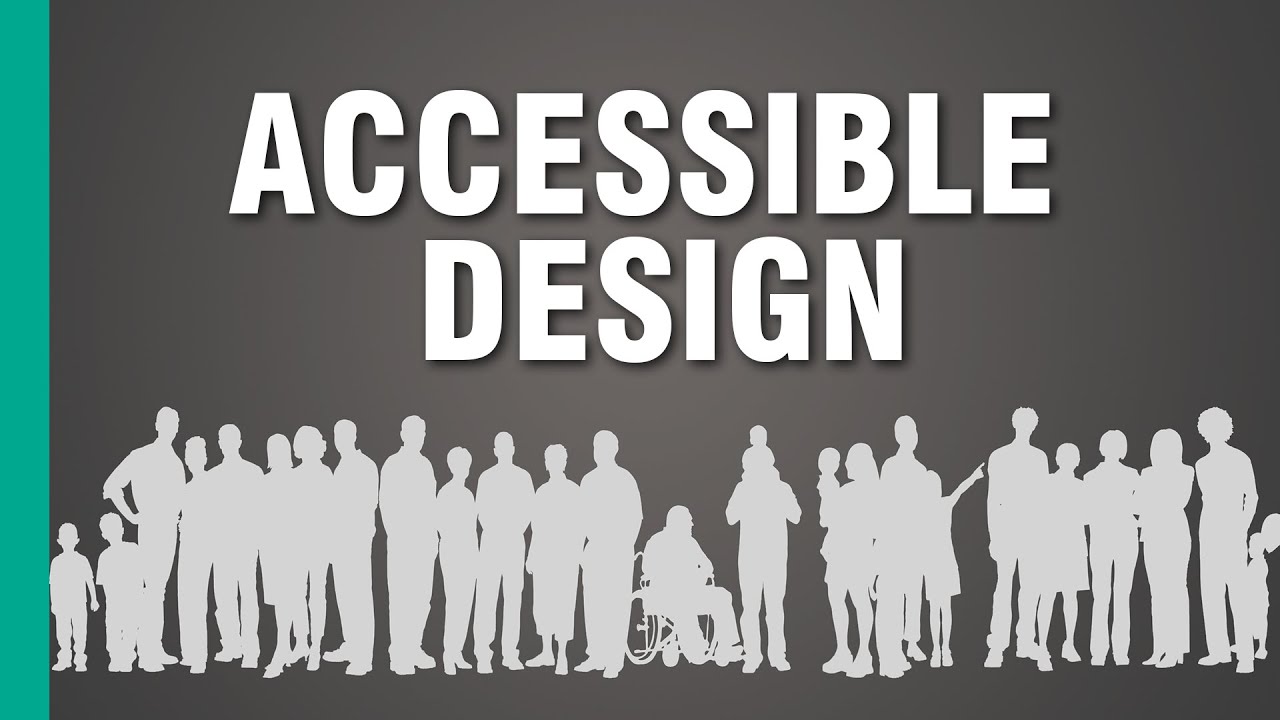The Importance Of Accessibility And Universal Design In Architecture - Creating Inclusive Spaces
The Importance Of Accessibility And Universal Design In Architecture has become a key consideration for architects, designers, and builders in creating structures that are functional, safe, and inclusive.
Author:George EvansMar 14, 202328K Shares395.7K Views

The field of architecture has evolved over the years, and the concept of accessibility and universal designhas become increasingly important.
The Importance Of Accessibility And Universal DesignIn Architecturehas become a key consideration for architects, designers, and builders in creating structures that are functional, safe, and inclusive.
What Is Universal Design In Architecture?
Universal design in architecture is an approach that emphasizes creating spaces and products that are usable, safe, and accessible to all people, regardless of their age, ability, or background.
This design concept aims to promote inclusivity, equality, and diversity in architecture, ensuring that all people can fully participate in society.
Universal design principles emerged from a movement that sought to create products, buildings, and environments that would not require any special adaptation or design changes for people with disabilities or other special needs.
It recognizes that diversity is a natural part of the human experience and seeks to design spaces that embrace this diversity.
One of the core principles of universal design is flexibility. This principle emphasizes the need to design spaces and products that can be adapted to meet the needs of different users.
For example, a kitchen counter that is designed at a standard height may not be accessible to someone who uses a wheelchair.
A universal design approach to the same kitchen would consider the use of different counter heights and the use of pull-out shelves or adjustable counters that can accommodate the user's needs. Another key principle of universal design is simplicity.
This principle recognizes that complex designs and technologies can be difficult for many people to use, and instead emphasizes the need to create simple and intuitive designs that can be easily understood and used by all users.
This principle is particularly important in architectural design, where complex systems can pose significant barriers to accessibility and usability.
Benefits Of Universal Design
Universal design is an approach to design that aims to create products, environments, and spaces that are accessible and usable by everyone, regardless of age, ability, or background.
The benefits of universal design are numerous, ranging from increased accessibility and usability to improved safety and comfort for all users.
One of the primary benefits of universal design is increased accessibility. By designing products and environments that are accessible to everyone, including those with disabilities or other special needs, we can ensure that everyone can participate in society to the fullest extent possible.
For example, a public building that incorporates universal design features such as ramps, elevators, and accessible restrooms can be used by people with mobility impairments, vision or hearing loss, and other disabilities. This not only promotes inclusivity but also helps to reduce stigma and discrimination against people with disabilities.
Another benefit of universal design is increased usability. By designing products and environments that are easy to use, intuitive, and simple, we can reduce the cognitive and physical load on users and make it easier for them to complete tasks and achieve their goals.
For example, a universal design approach to product design might include the use of large, easy-to-read text, simple iconography, and intuitive navigation to ensure that all users can access the product and its features easily.
The Importance Of Accessibility And Universal Design In Architecture - Universal Design Principles
Universal design principles are a set of guidelines and strategies that are used to design products, environments, and spaces that are accessible and usable by everyone, regardless of age, ability, or background.
The principles of universal design were developed by a group of architects, engineers, and designers in the late 1990s and have since been widely adopted by designers and architects around the world.
The seven principles of universal design are;
- Equitable use- The design should be usable by people with diverse abilities. For example, a door handle that is easy to grip can be used by people with arthritis or limited hand strength.
- Flexibility in use - The design should accommodate a wide range of individual preferences and abilities. For example, adjustable desk chairs can accommodate people of different heights and body types.
- Simple and intuitive use - The design should be easy to understand and use, regardless of the user's experience, knowledge, language skills, or current concentration level. For example, clear and simple signage can help people navigate a building or space easily.
- Perceptible information - The design should communicate necessary information effectively to the user, regardless of their sensory abilities. For example, tactile paving or braille signage can help people with visual impairments navigate a space.
- Tolerance for error - The design should minimize hazards and the adverse consequences of accidental or unintended actions. For example, low curbs or ramps can prevent tripping hazards for all users.
- Low physical effort - The design should minimize the physical effort needed to use the product, environment, or space. For example, automatic doors, elevators, or escalators can make it easier for all users to access a building or space.
- Size and space for approach and use- The design should provide adequate space and size for approach, reach, manipulation, and use, regardless of the user's body size, posture, or mobility. For example, wider doorways, hallways, and parking spaces can accommodate people using wheelchairs, strollers, or walkers.

Why Is Accessible Design Good for Everyone? | ARTiculations
Universal Design For Disabilities
Universal design for disabilities is a design approach that seeks to create products, environments, and spaces that are accessible and usable by people with disabilities.
This approach aims to remove barriers to participation and promote social integration for people with disabilities by ensuring that they have equal opportunities to access and use products and environments.
Disabilities can come in different forms, including physical, sensory, and cognitive disabilities. Some of the most common physical disabilities include mobility impairments, such as spinal cord injuries or cerebral palsy, and vision or hearing impairments.
Sensory disabilities can include deafness or blindness, while cognitive disabilities can include learning disabilities or intellectual disabilities.
To create products and environments that are accessible and usable for people with disabilities, designers and architects must apply universal design principles, as mentioned earlier.
By applying these principles, designers, and architects can ensure that products and environments are usable by everyone, regardless of their abilities.
For example, in architecture, designers can create barrier-free environments by providing accessible entrances, elevators, and restrooms. This can include features such as wheelchair ramps, tactile paving, and Braille signage.
Designers can also incorporate adjustable lighting, contrasting colors, and audio cues to help people with visual or hearing impairments.
People Also Ask
How Does Universal Design Benefits Society?
Universal design benefits society by promoting inclusivity, accessibility, and equal access to buildings and spaces for all individuals, improving quality of life, and reducing barriers to participation.
What Are Some Examples Of Universal Design Features In Architecture?
Examples of universal design features in architecture include wider doorways, ramps and lifts, lever handles, tactile and auditory cues, and accessible signage.
How Can Architects Incorporate Universal Design Into Their Practice?
Architects can incorporate universal design into their practice by incorporating accessibility and inclusivity principles into their designs, working with disabled communities and advocates, and adhering to accessibility standards and regulations.
What Are Some Benefits Of Accessible Architecture For Businesses?
Accessible architecture can benefit businesses by attracting a wider customer base, increasing employee satisfaction and productivity, and avoiding potential legal issues related to non-compliance with accessibility regulations
Conclusion
The Importance Of Accessibility And Universal Design In Architectureis not just about creating buildings that comply with regulations, but also about designing spaces that are welcoming and accommodating for everyone.
As architects and designers, it is our responsibility to create environments that are safe, comfortable, and accessible for people of all ages and abilities.
By incorporating the principles of universal design, we can ensure that our buildings are not just functional but also aesthetically pleasing, creating a more inclusive and equitable society.

George Evans
Author
George Anderson, an exceptional architectural designer, envisions and brings to life structures that transcend the realm of imagination. With an unwavering passion for design and an innate eye for detail, George seamlessly blends form and function, creating immersive spaces that inspire awe.
Driven by a deep appreciation for the interplay of space, light, and materials, George's innovative approach redefines the possibilities of architectural design. His visionary compositions leave an indelible mark, evoking a sense of wonder and transforming the built environment.
George Anderson's transformative designs and unwavering dedication continue to shape the architectural landscape, pushing the boundaries of what is possible and inspiring generations to come.
Latest Articles
Popular Articles
